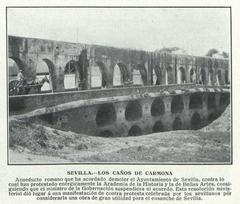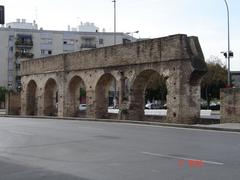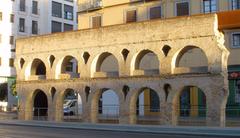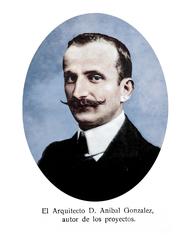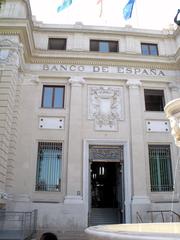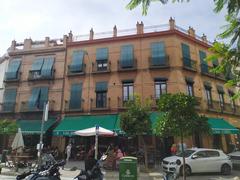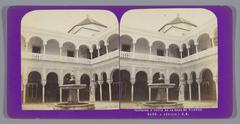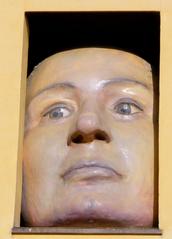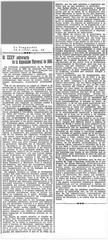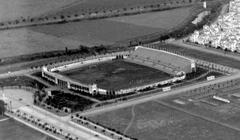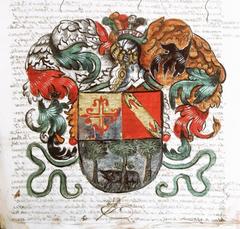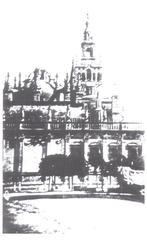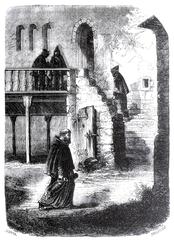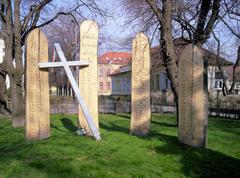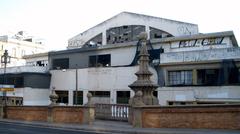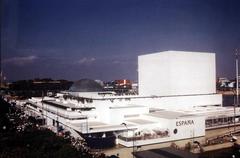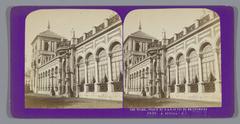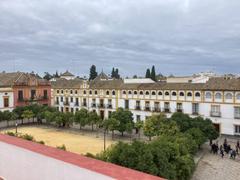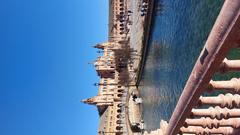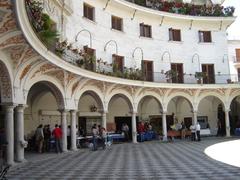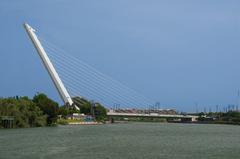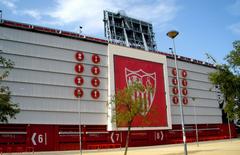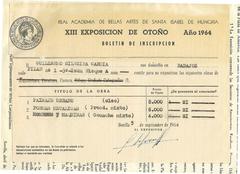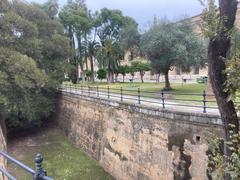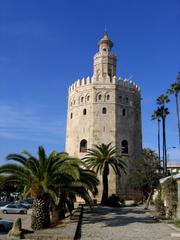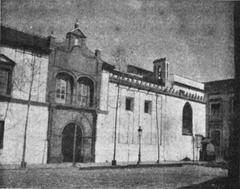
Comprehensive Guide to Visiting Caños de Carmona, Seville, Spain
Published Date: 24/07/2024
Introduction to Caños de Carmona
The Caños de Carmona, an ancient Roman aqueduct located in Seville, Spain, is a testament to the engineering prowess and architectural innovation of the Roman era. Constructed between 68 and 65 BCE, the aqueduct was designed to transport water from the springs of Santa Lucía in Alcalá de Guadaíra to the ancient city of Hispalis, now known as Seville. Spanning approximately 17 kilometers, this marvel of Roman engineering featured around 390 arches and employed advanced construction techniques such as keystones and voussoirs. Over the centuries, the Caños de Carmona underwent several modifications, particularly during the medieval period, blending Roman and medieval architectural styles. Despite falling into disrepair by the 19th century, the aqueduct’s historical significance has been recognized by various authors and historians, leading to preservation efforts in recent years (Explanders, inspain.wiki).
Today, the Caños de Carmona stands as a historical landmark that offers insights into Roman engineering and Seville’s rich cultural heritage. Visitors can explore the surviving sections of the aqueduct, located along Calle Luis Montoto and Calle Cigüeña, and appreciate the intricate details of its construction. The site is easily accessible and offers opportunities for guided tours and self-exploration. Nearby attractions such as the Alcázar of Seville, Seville Cathedral, and Plaza de España further enhance the visitor experience, making a trip to the Caños de Carmona a must for history enthusiasts and tourists alike.
Table of Contents
- Historical Background of Caños de Carmona
- Visitor Information
- Preservation Efforts
- Significance in Roman Engineering
- Cultural Impact
- Modern-Day Relevance
- FAQ
Historical Background of Caños de Carmona
Roman Origins
The Caños de Carmona, also known as the pipes of Carmona, are the remnants of a Roman aqueduct that once served the city of Seville, Spain. The aqueduct is believed to have been constructed around 68-65 BCE during the Roman Republic era, although the exact dating remains uncertain due to a lack of documentary evidence. The aqueduct was designed to transport water from the springs of Santa Lucía, located near the town of Alcalá de Guadaíra, to the ancient city of Hispalis, now known as Seville.
Architectural Features
The original Roman aqueduct was an engineering marvel, stretching approximately 17 kilometers (about 10.5 miles) and featuring around 390 arches, as reported by the German traveler Jerónimo Münzer in 1495. The structure was primarily built using local materials, including limestone and brick, and employed advanced Roman engineering techniques such as the use of keystones and voussoirs to construct the arches. The aqueduct’s design also included a series of underground channels and elevated sections to navigate the varied terrain between the source and the city.
Medieval Modifications
Over the centuries, the aqueduct underwent several modifications and repairs, particularly during the medieval period. These changes were necessary to maintain the water supply to Seville as the city expanded and its population grew. Some sections of the aqueduct were rebuilt using different materials and construction methods, leading to a blend of Roman and medieval architectural styles. This amalgamation is evident in the surviving sections of the aqueduct, where one can observe the transition from the original Roman stonework to later brick and mortar repairs.
Decline and Rediscovery
The aqueduct continued to function well into the early modern period, but by the 19th century, it had fallen into disrepair and was largely abandoned. The advent of modern plumbing and water supply systems rendered the ancient structure obsolete. Despite its historical significance, the Caños de Carmona were largely ignored in contemporary publications about Seville, overshadowed by other more prominent landmarks.
However, the aqueduct’s historical importance was recognized by several authors over the centuries. Luis de Peraza in 1530, Alonso de Morgado in 1587, and Rodrigo Caro in 1634 all documented the existence and condition of the aqueduct in their writings. In the 18th century, don Antonio Ponz and Fernando de Valderrama also noted the aqueduct’s significance in their works. More recently, Julio González in 1951 provided a detailed account of the aqueduct’s history and structure.
Visitor Information
Visiting Hours and Tickets
The Caños de Carmona can be visited throughout the year. While there are no specific visiting hours or ticket prices mentioned, it’s advisable to check with local tourism offices or heritage organizations for the latest information on guided tours and access to the site.
Travel Tips
- Best Time to Visit: The best time to visit the Caños de Carmona is during the spring and autumn months when the weather is mild and pleasant.
- Getting There: The site is located in Seville, and can be easily reached by public transport or car. Look for signs directing you to historical sites or the aqueduct itself.
- What to Bring: Comfortable walking shoes, a hat, sunscreen, and water are recommended, especially if you plan to explore the surrounding areas.
Nearby Attractions
- Alcázar of Seville: A royal palace originally developed by Moorish Muslim kings, it’s one of the most beautiful examples of Mudéjar architecture in Spain.
- Seville Cathedral: The largest Gothic cathedral in the world, it houses the tomb of Christopher Columbus and offers breathtaking views from its bell tower, La Giralda.
- Plaza de España: A stunning example of Renaissance Revival architecture, it’s a must-visit for its beautiful tile work and picturesque surroundings.
Preservation Efforts
In recent years, there has been a renewed interest in preserving the remaining sections of the Caños de Carmona. Local authorities and heritage organizations have undertaken efforts to protect and restore the surviving arches and channels. These initiatives aim to highlight the aqueduct’s historical and architectural significance and to promote it as a cultural heritage site.
Significance in Roman Engineering
The Caños de Carmona is a testament to the advanced engineering skills of the Romans. The aqueduct not only provided a reliable water supply to the city of Hispalis but also demonstrated the Romans’ ability to design and construct large-scale infrastructure projects. The use of arches, keystones, and voussoirs in the aqueduct’s construction is a prime example of Roman architectural innovation.
Cultural Impact
The aqueduct played a crucial role in the daily life of ancient Hispalis, supplying water for drinking, bathing, and irrigation. It also contributed to the city’s growth and prosperity by supporting public baths, fountains, and other amenities. The presence of such an advanced water supply system would have been a symbol of Roman civilization and technological prowess, reinforcing the city’s status within the Roman Empire.
Modern-Day Relevance
Today, the Caños de Carmona serves as a historical landmark that offers insights into the engineering and architectural achievements of the Romans. It also provides a tangible connection to Seville’s ancient past, allowing visitors to appreciate the city’s rich cultural heritage. Efforts to preserve and promote the aqueduct are essential for ensuring that future generations can continue to learn from and be inspired by this remarkable piece of history.
FAQ
What are the visiting hours for Caños de Carmona?
While there are no specific visiting hours, it’s advisable to check with local tourism offices or heritage organizations for the latest information on guided tours and access to the site.
How much are tickets for Caños de Carmona?
There are no specific ticket prices mentioned. It’s best to consult local tourism resources for the most up-to-date information.
What are some nearby attractions to Caños de Carmona?
Nearby attractions include the Alcázar of Seville, Seville Cathedral, and Plaza de España.
For more detailed information on the Caños de Carmona, you can visit the Roman Aqueducts website.
Stay updated by following us on social media or downloading our mobile app Audiala for more information on Seville’s historical sites and attractions.
Summary and Conclusion
The Caños de Carmona is not just an ancient aqueduct; it is a vital link to Seville’s storied past, reflecting the city’s historical and cultural evolution. From its Roman origins to its medieval modifications and modern-day preservation efforts, the aqueduct embodies the ingenuity and resilience of human engineering. The surviving sections of the Caños de Carmona, nestled amidst the bustling streets of Seville, offer a tangible connection to the past and a reminder of the city’s rich heritage. Visitors are encouraged to explore this remarkable site, appreciate its architectural beauty, and reflect on the historical significance it holds. Furthermore, the nearby attractions and immersive experiences provide a well-rounded and enriching visit, ensuring that the Caños de Carmona remains a cherished landmark for generations to come (Explanders, inspain.wiki).
By respecting the site’s visitor etiquette and supporting preservation efforts, we can all contribute to maintaining the Caños de Carmona as a symbol of Seville’s enduring legacy. Whether you are a history buff, an architecture enthusiast, or simply a curious traveler, the Caños de Carmona offers a unique and unforgettable journey through time.
References and Further Reading
- Explanders. (n.d.). Discover the Architectural Marvels of Caños de Carmona. Retrieved from Explanders
- inspain.wiki. (n.d.). Visiting Caños de Carmona - Hours, Tickets, and Travel Tips. Retrieved from inspain.wiki
